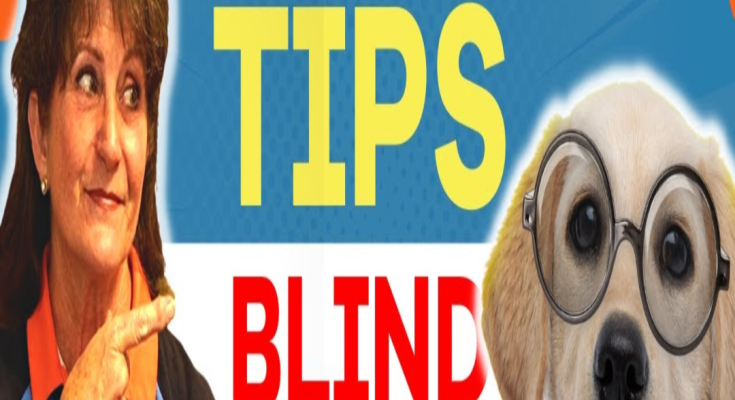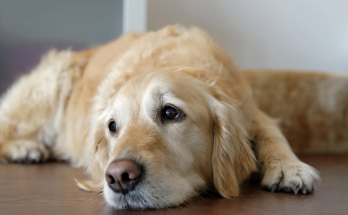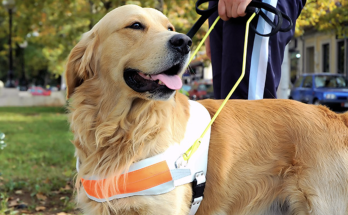 Speaking from experience, to first hear that your best friend will soon be totally blind is a bit of a jolt and causes an immense feeling of sadness. A million questions come to mind. Will her personality change? Will she still enjoy her life? Will she still be happy?
Speaking from experience, to first hear that your best friend will soon be totally blind is a bit of a jolt and causes an immense feeling of sadness. A million questions come to mind. Will her personality change? Will she still enjoy her life? Will she still be happy?
Now that I reflect back on my first conversation with the vet, I find that my concern was almost certainly unnecessary and even more interesting is the realisation that both the vet and I were actually well behind the eight ball on this news. Lucy, my golden cocker spaniel, had been coping with her loss of sight and still enjoying her life for months without me even knowing it. There was really no need for me to worry.
Vision loss may be caused from severe corneal disease, cataracts, retinal disorders, glaucoma, nerve damage or injury and is not always related to issues associated with age.
Acute (sudden) blindness may be difficult to pinpoint because dogs are blessed with exceptional hearing and smell which are, to a great extent, able to compensate for loss of vision. Dogs that lose their vision slowly will memorize their surroundings and it’s often only once their environment changes and they start to bump into things that their owner realises that something is wrong.
Dogs that are losing their sight or are totally blind will occasionally appear clumsy and trip over objects. They may sleep more and perhaps not play the same games as they did. They may even appear inattentive, no longer following you everywhere. They may look a little fearful or become easily startled or, as for Lucy, occasionally get themselves lost if they lose their bearings around the home.
Lucy has always been my shadow. She came to work with me for many years and where I went, she would follow. And, I have to admit, that if she wasn’t right behind me I would soon go looking for her to make her tag along. For me, life is never as good without my shadow.
So, when the vet told me a few years ago that she had problems with her retina and was already partially blind and would soon be totally blind, I was stunned and saddened. She was so important to me and the thought of her not being happy and not enjoying her life was heart breaking. I was, for the first time in my life, lost for words.
At the time, the vet explained that blindness in dogs is not uncommon and that most that are affected by blindness continue to lead contented and enjoyable lives because their other senses simply take over. They will settle into new routines and in most cases, any difference in them is not even obvious. Of course, I didn’t believe him!
As soon as I got home, I got on to the internet to find out everything that I could about how to help my little girl. There were some terrific tips which I tried and some worked and some didn’t but now, three years later, I realise that I shouldn’t have worried so much. Lucy had everything under control and she, in fact, taught me how to get on with life as if nothing had happened. I had to admit it but I was the old dog that learnt new tricks.
Routines are important for all dogs but for blind dogs, they are essential.
Routines allow dogs to feel confident that although their eyesight is gone, nothing has really changed. Many dog owners aren’t fully aware of all of the routines and habits that are in place, but for me, these became very apparent and very useful.
Keeping a blind dog’s food and water bowls in the same spot and feeding them at the same time as always is essential to their peace of mind. We keep extra water bowls throughout our home and garden just in case Lucy gets lost around the house while we were out or at night time. And when I feed Lucy, I talk (and often sing really badly) to her as I carry her bowl to where she is fed. This gets her excited about her dinner and she knows where to head to before I even get there. Even the cat follows along now which is fun to see.
A “safe spot” gives a blind dog a place to relax and feel safe knowing that they won’t be in the way or tripped over whilst still being close to the family.
When I watch Lucy, she seems to have a few “safe spots”. It reminds me of when we played Tag as kids and always had a pole or tree that was “baleeze” – the spot where no one could tag us. Lucy’s bed is her favourite safe spot. I move the bed in to the same spot in the lounge room in the morning and next to my bed in the evening and she always follows, carrying her fluffy toy which she places on to her bed to keep safe. She obviously knows that no one trips over her when she is on her safe spot but she is still close enough to us to be part of the family.
I have always had a routine with Lucy where I would “hide” a trail of treats around the house when I was leaving. I always thought it turned a negative time for her in to a fun time plus kept her busy for a few minutes while I got out the gate. This routine has become even more useful now that she can’t actually see me leave the house and this is my signal that I am leaving but will be back soon. I imagine that it could cause a dog to fret if they suddenly found themselves in the dark and alone, not knowing whether their owner is coming back. Signals like this help to settle any fears they might have. The only change that I have made to my routine with Lucy is that I have switched to treats that are a bit smellier so that she can find them more easily.
Dogs have an incredible sense of smell which is said to be a thousand times more sensitive than humans. This must be how Lucy manages to find and then steal my husband’s socks or locate bones that she buried a month ago even though she can’t see them. And in many ways, this is how Lucy finds her way around our home. Every morning she goes for a wander in the garden sniffing every tree and making sure her bones are still safe where she left them. She has obviously memorized the garden and the smells of the paths, parked cars and garden beds. To watch her, you would never guess that she is now totally blind.
As we move through a house all of us leave trails of our scent which is how blind dogs manage to find us a few minutes later. But, they also identify other scents throughout a house that we aren’t even aware of. This can be useful to remember if introducing a new piece of furniture or moving in to a new house with a blind dog. Self-adhesive foam pads that are available at hardware stores and often used on the bottom of furniture are a terrific way of marking glass doors, corners of hard furniture or steps. Spray them lightly with your favourite perfume (or rub them on your husband’s socks) and place them at “nose” height in the danger spots then walk your dog around the house so that she becomes aware of the perfume and learns to associate it with a piece of furniture or door.
For me, the hardest things about having a blind dog are the occasions when she bangs her head and pulls back in shock. My heart does a little somersault as I always try to rub the pain away. I feel especially bad if it is caused by me leaving a cupboard door or low level drawer open but I have trained myself to be more careful and have established “safe spots” for Lucy where she can still be around me without ending up with a massive headache.
All dogs love to get out for a walk and just because a dog loses its’ sense of sight doesn’t reduce its’ enthusiasm for a trip to the park. Now, I have to admit that I don’t let Lucy off the lead for a free run and we certainly don’t play fetch any more but I have invested in an extendable lead which gives her a bit of freedom to sniff every single tree in the park whilst feeling safe knowing that I am going to keep her from stumbling over branches and kerbing. It is quite interesting to watch her lift her feet more than she normally would as she walks on rough ground. She still walks on footpaths in exactly the same way as she did before and I have learnt to pull her up before kerbs or any trip hazards. One of the advantages of her blindness is that she is now oblivious to any other dogs in her vicinity so is easier to control.
We even take Lucy camping with us and she copes very well even though she is in completely unknown environments. The key is to always have her bed available as her “safe spot” with her water bowl next to it and never let her out without her lead attached. Of course, we might not play in the same way as before but we still wrestle and she does get excited when we play tug of war with her stuffed toy. And of course, she doesn’t need her sight to know that we are having a barbecue and that there is a sausage close by! She is still as playful and fun as she ever was.
Without realizing it, Lucy and I have developed little tricks so that we still interact in much the same way as before.
When giving Lucy a treat I gently tap her on the nose so that she knows where the treat is and doesn’t have to “bite the air” hoping that she finds it. I touch her back or her head often so that she knows that I am near and when we walk together she stays so close to me that I can feel her fur against my leg. And I always put her in a “safe spot” when I am in different rooms of the house, tell her when I am leaving a room and talk to her constantly as I move around the home.
I am always amazed when I see Lucy barrel down the steps and path out the front of our house always missing the poles and stopping just inches from the next set of steps. How does she do it? She can’t possibly be counting her steps like humans might. She has four legs! Who could count that fast? And I am amazed when she looks straight in to my eyes just like she used to with that look of love and adoration. How does she even know where my eyes are? And yet, even though she can do these things, she still manages to stumble over the cat when he is asleep on the carpet. Perhaps she does this on purpose just for a bit of fun!
Lucy is still my shadow and in many ways, nothing much has changed. I have always loved my little girl but I do wonder whether our incredible closeness now is due, in some way, to our reliance on each other. Speaking from experience, I would certainly say without hesitation that caring for a blind dog is both fulfilling and heartwarming and not one to cause any concerns or trepidation.
Written by:
Kath Bafile
Better Pets and Gardens
Marketing Coordinator



